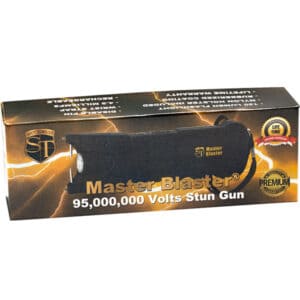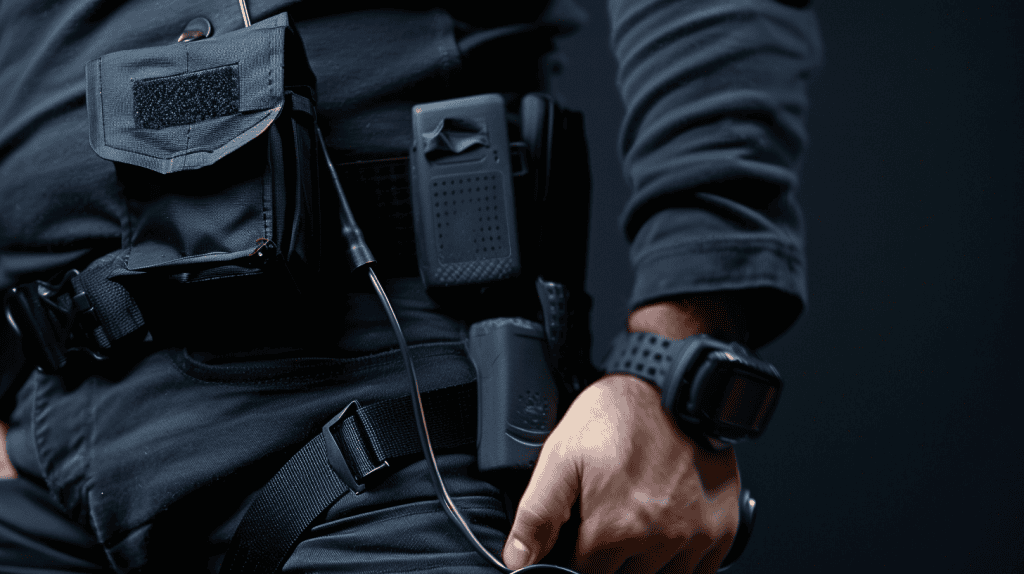For practical stun gun training, follow these five essential steps. First, understand your state’s legal requirements for stun gun possession and use, as they vary widely. Next, choose a stun gun that balances high voltage, portability, and ease of use. Learn basic handling techniques, such as maintaining a firm grip and practicing quick drawing. Practice situational awareness to identify potential threats early. Finally, engage in simulated scenarios to build muscle memory and improve response under stress. Mastering these aspects will make your training thorough and more effective, preparing you for any situation.
Key Takeaways
- Understand Legal Requirements: Research state and local laws to ensure legal compliance regarding stun gun possession, permits, and usage locations.
- Choose the Right Stun Gun: Select a model that balances voltage, size, and ease of use to match your personal needs and comfort.
- Practice Basic Handling Techniques: Regularly practice firm grip, safety checks, quick draw, and proper finger placement to enhance control and efficiency.
- Develop Situational Awareness: Train to stay alert, identify potential threats early, and assess environmental cues for better safety.
Know the Legal Requirements
 Before you start training, understanding the legal requirements for carrying and using a stun gun in your area is crucial. Every state has different regulations concerning the possession and use of stun guns, so you must familiarize yourself with these legal considerations to guarantee compliance.
Before you start training, understanding the legal requirements for carrying and using a stun gun in your area is crucial. Every state has different regulations concerning the possession and use of stun guns, so you must familiarize yourself with these legal considerations to guarantee compliance.
Some states may require a permit to carry a stun gun, while others might ban them altogether. Knowing your state regulations can prevent legal issues and help you use your stun gun responsibly and effectively.
To start, research your state’s specific laws regarding stun guns. Look for information on whether you need a license, age restrictions, and where to carry the device legally.
Many states have extensive online resources or government websites that provide detailed legal guidelines. It’s also a good idea to check for any local ordinances that might impose additional restrictions.
Choose the Right Stun Gun
 Once familiar with the legal requirements, the next step is to select the stun gun that best suits your needs and circumstances.
Once familiar with the legal requirements, the next step is to select the stun gun that best suits your needs and circumstances.
Start by considering various stun gun features, such as voltage, size, and ease of use. High voltage models deliver a firmer shock, which can incapacitate an attacker more effectively but may also be bulkier. Smaller stun guns are more portable and easier to conceal but may offer less power.
Different stun gun brands provide various features, so researching and comparing them is essential. For instance, brands like Master Blaster, Zap, and Fang offer reliable products with different specifications. The Master Blaster model often comes with advanced safety features and higher prices, while Zap stun guns are known for their affordability and compact designs. Fang stun guns usually strike a balance between power and portability.
Consider where and how you plan to use the stun gun. A lightweight, portable model might be best if you need it for jogging or nighttime walks. If home security is your primary concern, a more robust, high-voltage option could be more suitable.
Always ensure the stun gun you choose feels comfortable and is easy to operate under stress.
Learn Basic Handling Techniques
Mastering basic handling techniques is vital for effectively using your stun gun in high-stress situations. First, get comfortable with grip techniques. Hold the stun gun firmly, guaranteeing a secure grip to prevent it from being knocked out of your hand. Your thumb should be near the activation button, allowing for quick response times.
Next, familiarize yourself with the safety precautions. Always keep the stun gun deactivated until you’re ready to use it. Develop a habit of checking the safety switch every time you handle the device. This guarantees you don’t accidentally discharge it.
Here’s a table to illustrate proper handling techniques:
| Technique | Description | Purpose |
|---|---|---|
| Firm Grip | Hold securely with your thumb near the button | Prevents loss during struggle |
| Safety Switch Check | Verify the safety is on when not in use | Avoids accidental discharge |
| Quick Draw | Practice pulling the stun gun swiftly | Increases response time |
| Finger Placement | Keep your finger off the trigger until it is ready | Enhances control and safety |
Lastly, practice these techniques regularly. Consistent practice builds muscle memory, which is essential during emergencies. By mastering these handling techniques and adhering to safety precautions, you’ll be better prepared to use your stun gun effectively and responsibly.
Practice Situational Awareness
 Building on your handling skills and enhancing your situational awareness is essential to effectively using your stun gun in real-world scenarios.
Building on your handling skills and enhancing your situational awareness is essential to effectively using your stun gun in real-world scenarios.
Situational awareness involves constantly being alert to your surroundings and recognizing potential threats before they become imminent. Start by paying close attention to environmental cues. These cues might include unusual behavior, sudden movements, or changes in lighting and sound that could indicate a potential threat.
When you’re out and about, practice regularly scanning your environment. Notice exits, potential hiding spots, and areas with limited visibility. This habit will help you quickly assess the safety of your surroundings and identify any immediate risks.
Practical threat assessment is vital; it involves evaluating a situation to determine whether a threat is present and how severe it might be.
Engage in Simulated Scenarios
You can practice your stun gun techniques in simulated scenarios in controlled, realistic environments. These role-playing exercises help you understand different confrontation dynamics while improving your response time. You’ll develop the skills needed to react effectively under pressure by simulating potential real-life situations.
Role-playing exercises also play an essential role in stress management. A simulated threat can evoke a stress response similar to a real confrontation. Practicing in these conditions helps you build mental resilience, ensuring you remain composed and make sound decisions when it matters most.
Incorporating various scenarios into your training can be highly beneficial. Here’s a table to illustrate the different types of simulated scenarios and their purposes:
| Scenario Type | Objective | Skills Developed |
|---|---|---|
| Self-Defense | Protect yourself | Quick reaction, accuracy |
| Multiple Attackers | Manage group threats | Situational awareness |
| Confined Spaces | Limited movement | Spatial awareness, precision |
| Public Settings | Bystander safety | Decision-making, restraint |


